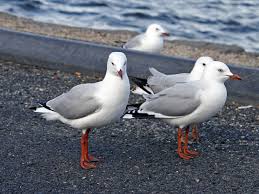1. Porifera - The Sponges
2. Coelenterata – The Coelenterates
3. Platyhelminthes – The Flatworms
4. Nematoda – The Roundworms
5. Annelida – The Segmented Worms
6. Arthropoda – The Arthropods
7. Mollusca – The Mollusks
8. Echinodermata – The Echinoderms
9. Chordata – The Chordates
2. What type(s) of habitat can the species be found?
-Manly in Marine or fresh and Salt Water
3. How does the species digest food?
-Some species have a complete digestive system and others incomplete
4. Have you seen an example of a species in a phyla? Explain where, and what was the situation.













